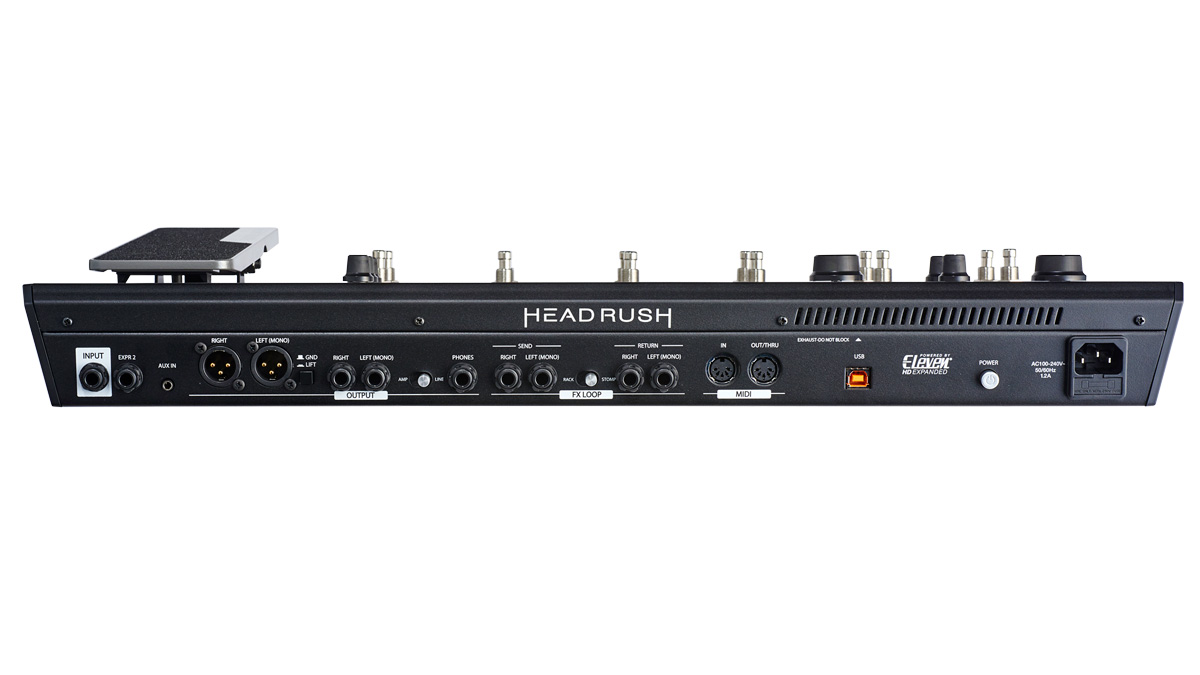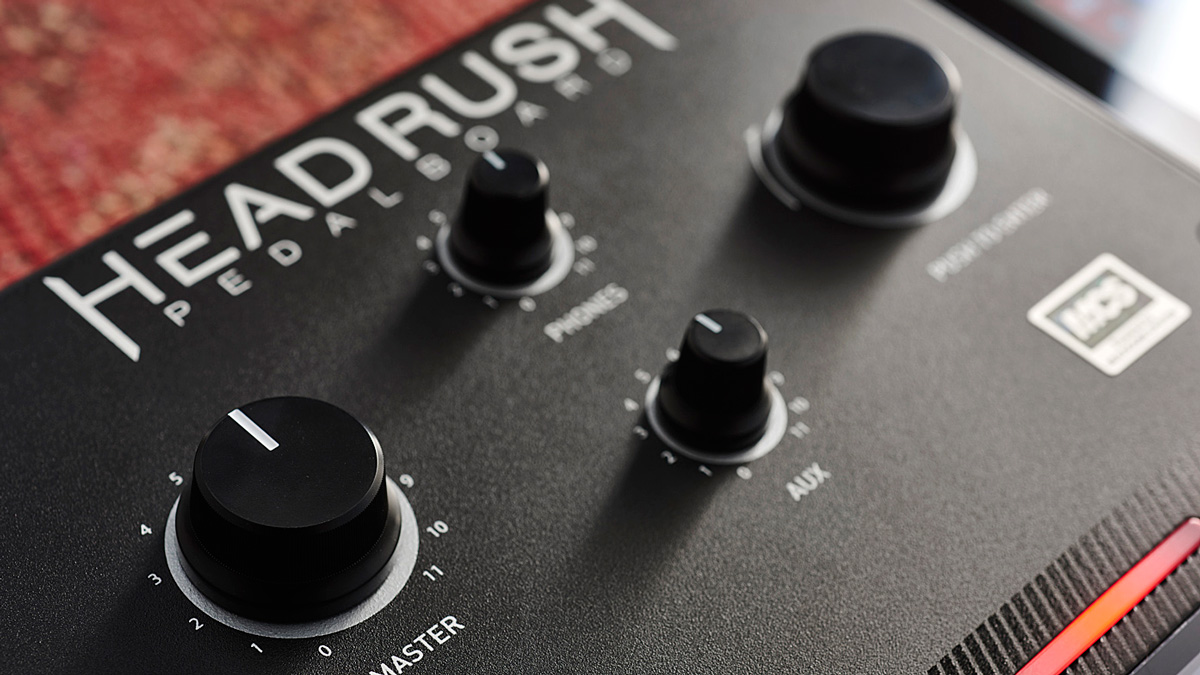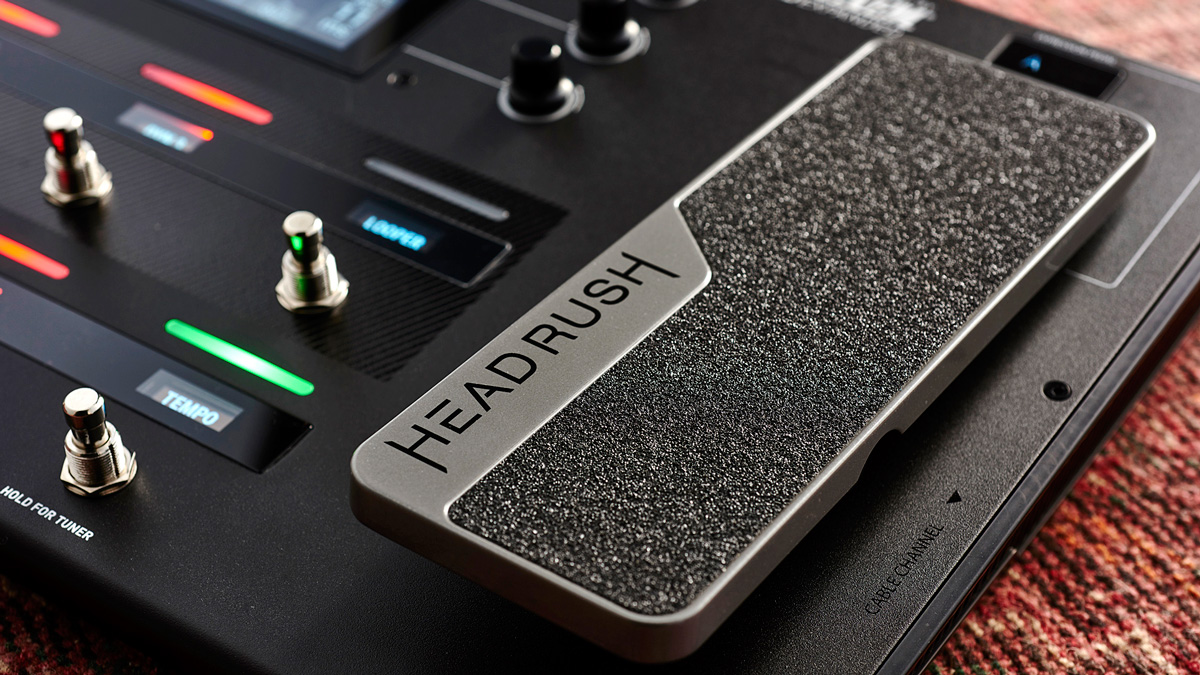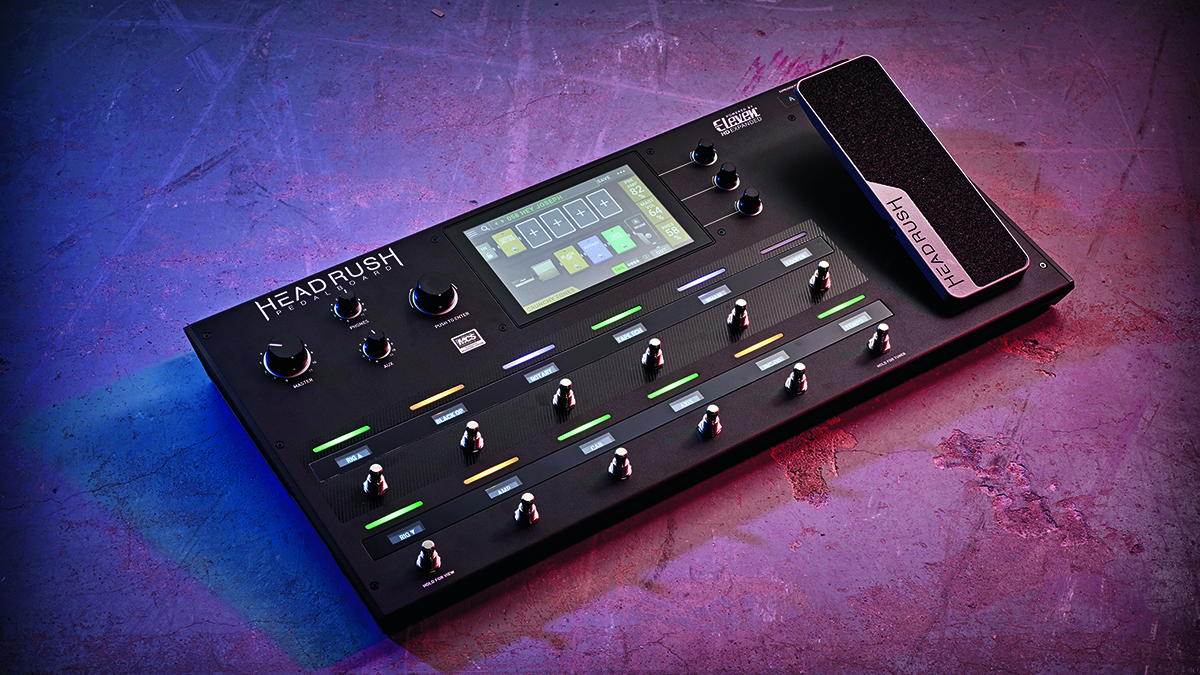MusicRadar Verdict
The Pedalboard offers a feature set that can adequately take care of onstage, recording and practice needs.
Pros
- +
Touchscreen, colour-coding, scribble strips.
- +
Onboard sounds cover the essentials.
- +
Audio interface.
Cons
- -
Limited number of models/routing options.
- -
No software editor.
MusicRadar's got your back
Whether you like the idea of the all-in-one modelling processor or not, they are definitely here to stay and rapidly becoming a common sight on stages everywhere.
And now there’s a new kid on that block in the shape of the HeadRush Pedalboard - but it hasn’t just emerged out of nowhere. HeadRush is part of the inMusic group that includes Akai and other companies, and the Pedalboard has modelling from the team behind Digidesign’s Eleven amp and effects simulation software for Pro Tools, as seen in the Eleven Rack, a rackmount unit that we looked at almost 100 issues back and is still favoured by many guitarists.
Now, HeadRush is at pains to point out that Pedalboard is not just an Eleven Rack strapped to a foot controller with some extra features. The company tells us that it has, in fact, completely reconstructed the whole architecture of the DSP system, starting by disassembling the legacy Eleven Rack/plug-in code to create Eleven HD Expanded with more realistic modelling and increased flexibility for creating rigs.
This new DSP platform, making use of a quad-core processor, has also allowed feature-set expansion to include a faster and more guitarist-friendly user interface, reverb/delay tail spill-over between presets, the ability to load custom/third-party impulse responses, a looper with 20 minutes of record time, and more.
- Explore more of the best multi-effects pedals

What’s also new to this genre is the inclusion of a seven-inch touchscreen to edit patches and to create new ones.
In form, the Pedalboard most closely resembles Line 6’s Helix Floor in that it has a treadle and 12 footswitches with LED ‘scribble strips’ showing each switch’s function and a colour-coded LED for each, although in this instance that LED sits above rather than being a ring surrounding the footswitch.
Construction is solid and roadworthy, and features a nice touch with a channel on the base to pass cables through, helping keep stage clutter down. Knob furniture is neat and kept to a minimum, because a lot of what you need to do can be carried out with a finger on the touchscreen (see the ‘How Easy Is Editing?’).
All of the connections are located on the back panel and include a USB socket that not only allows computer backup of the Pedalboard’s presets and import of impulse response (IR) files, but its use as an audio interface for recording or reamping, with four channels in and out, including stereo dry and wet signals.

There are also MIDI sockets for Program and Control Change functionality and an Aux input so you can connect a music player for practice purposes. Each of the 270 presets in the unit is known as a Rig and is constructed from a chain of 11 blocks that can be placed in any order in a single linear chain or a choice of two parallel split chains. To fill the blocks, you get 33 amps, 15 cabs (with 10 mic choices) and 42 effects.
The touchscreen offers the quickest and most intuitive onboard editing functionality that we’ve seen in a unit of this type, making it dead easy to edit a rig or create one from scratch. You can simply swipe an object (pedal, amp or cab) to change its position in the signal chain. A tap on one of them will bring up three major parameters to edit with the three adjacent soft knobs - touch anywhere in the parameter box to bring up the next set of three parameters - while a doubletap opens a dedicated screen for that object, including the option of changing its LED colour coding. When you load or change a particular pedal, you also get a useful choice of instant preset options for its actual sound/settings. There’s also an encoder to move through selectable items onscreen or to adjust parameters. Of course, during a gig situation you may not want to be on your knees messing with the touchscreen, encoder or knobs, so there’s also a Hands-Free Mode whereby you hold the footswitch assigned to the model that you want to adjust, which brings up a set of parameters on the top footswitches that can be selected and adjusted using the expression pedal. And while you can save presets to a computer, there’s no dedicated software editor.
Cabinet sounds can be expanded by loading third-party IR files, with all common formats supported - an exclusive download from Celestion is included to get you started. You can also dedicate a block to any external pedals that you connect to the rear panel send and return loop.
There are several modes available for calling up sounds, easily changed by a couple of footswitch presses. In Stomp mode, the two footswitches to the left scroll through and select Rigs, while the central eight footswitches call up stompboxes within a selected Rig. Then in Rig mode, the left switches scroll through the Rig banks, while the eight select rigs.
The HeadRush also offers a Hybrid mode where you can have Rigs on the top row of the eight and stomps on the bottom. Besides these, you can access setlists - ordered collections of Rigs for your gigs. Performance is aided by the onboard treadle expression pedal that can operate either as pedal A or B: a press on the toe switches between these, or you can plug in an external pedal to take over the B functions.
There’s a Classic mode for adjusting a single parameter or Advanced mode with up to four parameters.
Sounds
While there are usable Rigs onboard, most users will probably want to create their own and the available models offer plenty of scope for a wide range of tones, especially if you choose to upload IRs for any rigs that include amp and cab.
Playing through the Pedalboard feels fine and puts some quality sounds at your disposal: Fender, Marshall, Vox, Soldano and Mesa/Boogie amps feature heavily, while the effects cover all the conventional choices and will combine nicely to create Rigs that are pure effects pedalboards in front of your amp.

While the current models are pretty much the same that you get with the most updated version of Eleven Rack, HeadRush tells us that it’s working on new models that are slated for announcement at Summer NAMM. Finally, the Looper function is separate rather than being a block in a Rig and features up to 20 minutes with 100 loop layers.
It’s particularly straightforward to use with many useful functions spread across the footswitches, including an ‘Insert’ function that offers punch-in/out for a specific part of your loop and will overwrite all previous layers.
The Pedalboard offers a feature set that can adequately take care of onstage, recording and practice needs. Longterm Eleven Rack fans familiar with the sound set might see it as a welcome alternative to taking the rack on stage and will be pleased they have more options for siting effects in the chain. For others, while the interface may confer an advantage that will attract potential users to the unit, it faces tough competition sonically, particularly from Line 6’s Helix LT. As always, if the price is right, try one out and see whether it has the sounds you need to get the job done.
Trevor Curwen has played guitar for several decades – he's also mimed it on the UK's Top of the Pops. Much of his working life, though, has been spent behind the mixing desk, during which time he has built up a solid collection of the guitars, amps and pedals needed to cover just about any studio session. He writes pedal reviews for Guitarist and has contributed to Total Guitar, MusicRadar and Future Music among others.
“I used everything I knew about music”: How Green Day exceeded expectations with their most ambitious song
YouTube just added AI tools that makes musicians, library music and video editors redundant
“Every one of them said yes without hesitation": Hank Marvin and Roger Taylor have just remade a '60s classic for charity











